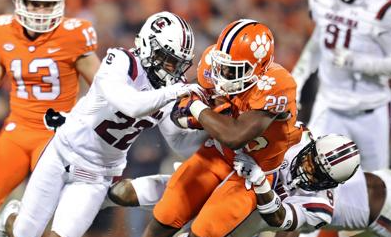
The sticker price for a college football national title has soared into the tens of millions of dollars, and that’s just for assembling the roster of players, once compensated solely with scholarships and a grueling schedule of two-a-days. Today, however, nearly every player—from star quarterbacks to the unsung kickers—is cashing in, thanks to lucrative name, image, and likeness (NIL) deals combined with the freedom to transfer schools at will without penalty. These game-changing dynamics have turned college football into a multi-billion dollar industry, with teams now investing massive sums to build championship-caliber rosters. The stakes have never been higher, and the money flowing through the sport has reached unprecedented levels.
Tonight, the College Football Playoff National Championship game between No. 8 Ohio State and No. 7 Notre Dame will showcase the results of these astronomical investments. Ohio State, according to its athletic director, spent “around $20 million” to assemble its roster—a figure that reflects just how far the financial landscape of college football has evolved. The number is staggering on its own, but many experts believe the true cost could be even higher, with some programs likely spending well beyond that amount to compete at the highest level. This is not just about recruiting top-tier talent but also about creating an environment that can keep that talent and maintain competitive advantage year after year.
As Joe Moglia, the former head coach of Coastal Carolina and CEO of TD Ameritrade, pointed out, while Ohio State’s $20 million figure is publicly acknowledged, it’s unclear just how much other programs are investing. “There’s plenty of other teams who spent $20 million, but they’re not playing for the national championship,” Moglia said, implying that some schools may be spending even more, but aren’t in the same elite position as Ohio State. Moglia speculates that Notre Dame could be matching or even exceeding Ohio State’s spending, though like most teams, they aren’t revealing the full financial picture. It’s clear that the gap between top-tier programs and the rest of the field is widening, and money is now one of the driving forces behind this disparity.
The financial arms race is not just about the obvious stars but about building an infrastructure that attracts and retains talent, whether it’s through NIL deals, facilities, or other incentives. In the past, a school’s prestige and history were the primary drawing points for recruits, but now, the money and opportunities off the field are equally important. Players are more likely to go where they can make the most money, and schools are doing everything in their power to make sure they’re at the top of that list. As NIL opportunities continue to grow, the way college football programs are built will continue to evolve, with financial investment playing a larger role than ever before.
With each passing season, the stakes in college football continue to escalate. What started as a game about passion and tradition is now a high-stakes business venture where the price of a national championship is measured not just in wins but in the millions of dollars spent on talent, recruitment, and retention. As Ohio State and Notre Dame face off tonight, fans will be watching not only to see who wins but to understand just how much money—and how many resources—are now required to reach the pinnacle of college football. The future of the sport is clear: success will increasingly be defined by who can afford to spend the most to build their dream team.
Leave a Reply